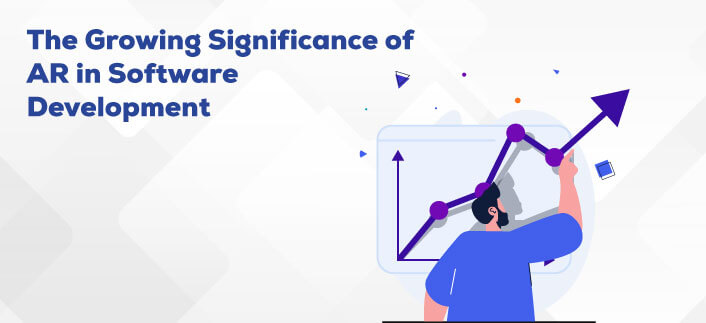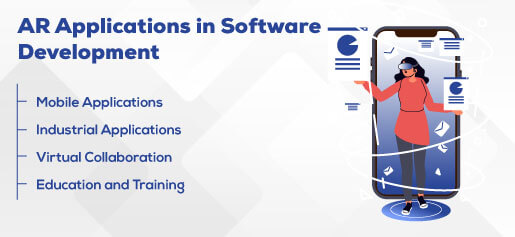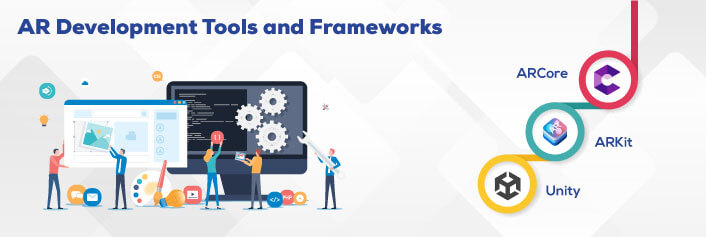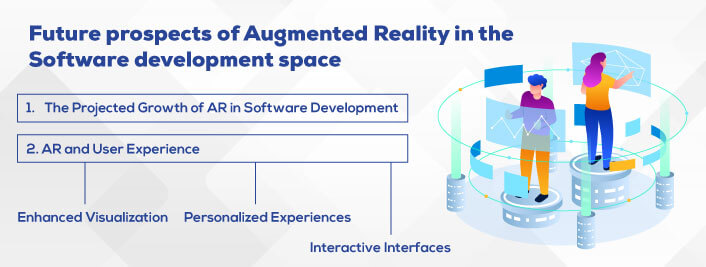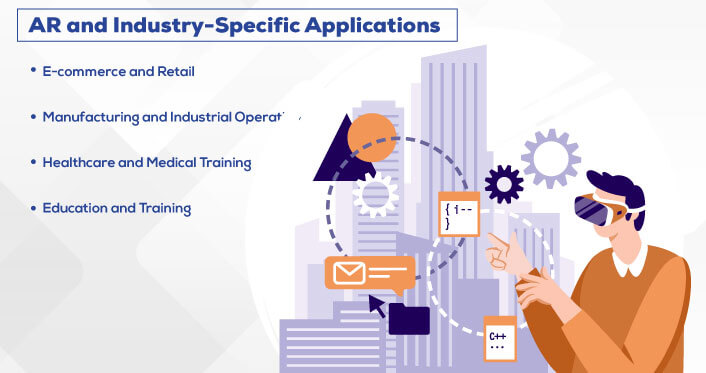Role of Augmented Reality Software Development Space in 2023
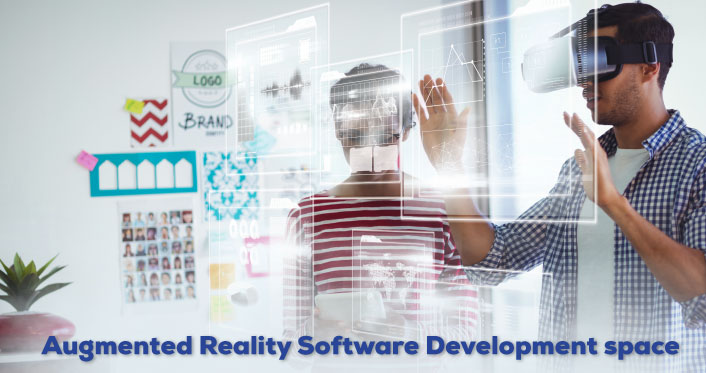
Augmented Reality Software Development in 2023
Introduction
Augmented Reality (AR) has revolutionized several industries. Its potential in software development is immense.
In 2023, it becomes crucial to explore the application of AR in software development. It is equally important to understand the opportunities it presents for startups and traditional businesses.
This blog post aims to shed light on the role of augmented reality in software development.
Are you a software developer looking to expand your skillset or a business seeking innovative solutions?
This article provides valuable insights to help you harness the power of Augmented Reality.
1. The Growing Significance of AR in Software Development
Augmented Reality has emerged as a powerful tool for creating immersive and interactive software applications. With the rise of AR development platforms and frameworks, businesses have gained access to the necessary tools and resources to incorporate AR into their projects. According to Statista, the global augmented reality software market is projected to cross $16.8 billion in 2023.
AR enables engineering teams to overlay digital information in the real world. This provides users with an enhanced experience. From mobile applications to enterprise solutions, the integration of AR technology adds a new dimension to software development. As AR becomes more accessible and affordable, businesses across industries are recognizing its potential. Since it helps drive customer engagement, increase productivity, and streamline processes.
2. AR Applications in Software Development
a) Mobile Applications: AR is transforming mobile app development. Augmented reality offers unique user experiences. From AR-powered gaming applications to interactive shopping experiences, engineering teams can leverage AR to captivate users. This is helping high-growth startups differentiate their products in the competitive app market. According to Business of Apps, the global mobile AR market is expected to reach 2.4 billion users by 2023.
b) Industrial Applications: AR has found practical applications in industries such as manufacturing, engineering, and logistics. AR helps in overlaying digital information onto physical objects. Thus, it provides real-time guidance, improves maintenance processes, and enhances training programs. This results in increased efficiency and reduced errors in complex industrial operations.
c) Virtual Collaboration: AR enables remote teams to collaborate seamlessly. With AR businesses are creating virtual meeting spaces and visualizing shared data. Engineering teams are creating AR-based collaboration tools. These tools allow team members to interact with virtual objects, share ideas, and work together in real time. This enhances communication and productivity, especially in distributed work environments.
d) Education and Training: AR has the potential to revolutionize education and training. AR enables interactive and immersive learning experiences. Engineering teams are creating AR applications that simulate realistic scenarios. This allows learners to acquire new skills and knowledge in a practical and engaging manner. This can be particularly effective in fields such as medical training, architecture, and vocational skills development.
AR Development Tools and Frameworks
To leverage the power of AR in software development, developers can utilize a range of development tools and frameworks that simplify the creation of AR applications.
a) ARCore: Developed by Google, ARCore is an AR platform. It enables developers to build AR experiences for Android devices. It provides essential capabilities such as motion tracking, environmental understanding, and light estimation.
b) ARKit: ARKit, created by Apple, is a development framework. It empowers developers to build AR applications for iOS devices. It offers advanced features like world tracking, scene understanding, and face tracking, allowing developers to create highly immersive AR experiences.
c) Unity: Unity is a popular cross-platform game engine that also supports AR development. With Unity, developers can build interactive and visually-rich AR applications for various platforms, including mobile devices and augmented reality glasses.
Future prospects of Augmented Reality in the Software development space
As we look toward the future, it becomes crucial to explore the predicted trajectory of AR in software development. This helps us understand the exciting possibilities it holds. In this section, we aim to provide insights into the future of AR in software development.
For business owners, understanding these predictions will help them stay ahead in this dynamic field.
1. The Projected Growth of AR in Software Development
- The future of AR in software development looks promising. AR will record exponential growth in the coming years. According to a report by Markets and Markets, the global AR market size is estimated to cross $77.0 billion in 2023. The sector is growing at a Compound Annual Growth Rate (CAGR) of 55.71% from 2018 to 2023. This projection showcases the increasing demand for AR solutions in software development.
With every passing day, AR is becoming more accessible and user-friendly. Thus, its adoption in diverse industries is expected to soar. From mobile applications to enterprise software, AR will play a crucial role in enhancing user experiences, improving productivity, and driving innovation.
2. AR and User Experience
a) Enhanced Visualization – AR has the potential to revolutionize the way users interact with software applications. By overlaying digital content in the real world, AR can provide users with visualizations and information in context. This can lead to a more immersive and intuitive user experience. For example, AR can enhance data visualization, allowing users to interact with complex datasets in a more intuitive and engaging manner.
b) Personalized Experiences: AR enables developers to create personalized experiences based on user preferences and behavior.
By leveraging data analytics and machine learning, software applications can adapt to users’ needs and provide customized content. This level of personalization enhances user engagement and satisfaction.
c) Interactive Interfaces: AR opens up possibilities for interactive interfaces. With AR users can directly manipulate and interact with virtual objects. This provides a more natural and intuitive way of interacting with software applications. For instance, users can use gestures or voice commands to navigate through an application or manipulate virtual objects.
AR and Industry-Specific Applications
a) E-commerce and Retail: In the future, AR will revolutionize the e-commerce and retail sectors by providing immersive and interactive shopping experiences. Customers today, try on virtual clothing, visualize furniture in their homes, and explore products in a lifelike manner. According to Retail Perceptions, 61% of shoppers prefer stores that offer AR experiences, indicating the growing demand for AR in the retail industry.
b) Manufacturing and Industrial Operations: AR will find extensive applications in manufacturing and industrial operations. From providing real-time information and instructions to workers on the shop floor to assisting in complex assembly processes, AR can improve productivity, reduce errors, and enhance worker safety. According to PwC, 35% of manufacturing companies are already piloting or implementing AR technologies.
c) Healthcare and Medical Training: AR will play a significant role in healthcare, transforming medical training, patient care, and surgical procedures. AR can provide real-time data visualization during surgeries, aid in medical education and training through realistic simulations, and facilitate remote collaboration among healthcare professionals. The healthcare AR market is expected to reach $4.9 billion by 2023, as estimated by Research and Markets.
d) Education and Training: AR has the potential to revolutionize education by providing immersive and interactive learning experiences. In the future, students will learn in a real-life experience that enhances efficiencies by 2x.
Conclusion
In 2023 and beyond, engineering opportunities are abundant and diverse. The fields of Artificial Intelligence and Machine Learning, Cybersecurity, Renewable Energy, and the Internet of Things present numerous possibilities for aspiring engineers.
To add to this augmented reality offers a subtle integration of real-life things with digital experiences to enhance the experiences.
This deadly combination is going to be the epicenter of disruptions in the next 10 years.
